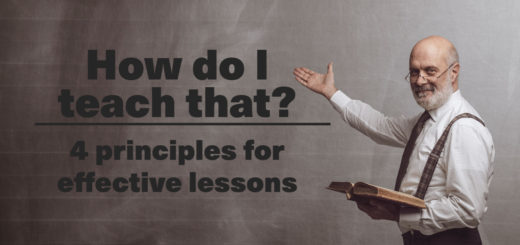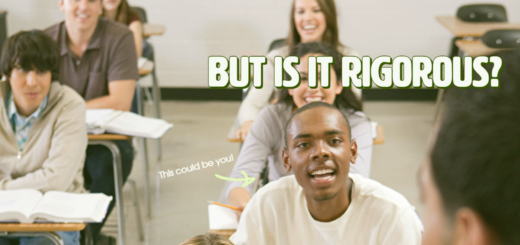What the best college teachers do – a review
If you had to describe the best college teachers – across disciplines, across universities, and across class size – what characteristics would you include? How do the prepare for class? How do the assess learning? How do they treat their students? What do they do different when teaching? Are there similarities between these best teachers and how do they differ from the rest?
Ken Bain performed such a research project back in the 1990s, publishing his findings in the 2004 book What the best college teachers do. This is my review of the book.
What is best?
Arguably the most important part of this study, defining “best” by its nature, colors the rest of the findings. What did Bain consider best? In chapter 1, he outlines what best looks like, while simultaneously admitting its difficult to find evidence to support. For him, the best college teachers “achieved remarkable success in helping their students learn in ways that made a sustained, substantial, and positive influence on how those students think, act, and feel.” Many of the teachers he included in his study had won awards for teaching, but that was not a pre-requisite. Some faculty worked at the fringes of their discipline, but managed to spark fresh and innovative thinking in their students. In essence, he looked for teaching that perpetuated deep and meaningful learning in students, something that I endeavor to do but have not yet achieved.
To be included in Bain’s study, teachers had to pass two tests. First, all students had to be highly satisfied with the experience and inspired to continue to learn in that field. Second, all students needed to show evidence that they had learned the material. Developing the list of “best” teachers seemed to evolve over time, requiring qualitative evidence to be included in the study which in turn is used as evidence of “best”. This approach, while perhaps necessary, opens questions about the validity of the results. After identifying teachers, Bain interviewed students, interviewed faculty, reviewed syllabi, observed classrooms, reviewed students work, and talked with colleagues.
What do the best teachers do?
From the data collect, Bain identified six areas where the “best” teachers showed similarities that stand in contrast to their colleagues who were not in this group. These six areas are: 1) What do they know and understand? 2) How they prepare? 3) What they expect from their students? 4) What they do when they teach? 5) How they treat students? and 6) How do they check their progress and evaluate their efforts? Each of the following paragraphs highlights the major findings from each area.
What do they know?
As expected, the best teachers know their specialty well. Many had long scholarly records, but not necessarily. But besides just knowing the field as it is now, they often know the history of their field, including controversies and major ways of thinking within the field. But this is not unique among faculty. What really set the best teachers apart was an equal understanding of the process for how knowledge is learned. They appreciated that knowledge is not something that can just be memorize, but requires integration of ideas and clarity and precision in defining terms. Sometimes, students enter the class with existing models for how the world works that contradicts the lessons. The best teachers are aware of those mental models and attempt to change them slowly through guided questions.
How do they prepare?
When it come to preparing, the best college teachers start with meaning learning objectives and then systemically design the course around those objectives. One of the longer chapters in the book, Bain lists a dozen questions that the best teachers ask themselves during course design. Questions such as “What reasoning abilities do my students need to develop?” or “How will I help students having difficulty?” or “How will I find out how students are learning before assessing them?”
What do they expect of students?
For expectations, the best teachers expect students to live up to their potential, which means seeing every student as intelligent and capable. There’s not just an expectation that students remember information, but that they comprehend it and can reason with it. The standards are high, but is met with a trust that each student can live up to that potential. There’s also a willingness to let students take control of their own learning; inspiring them to go beyond what is discussed in class. Often, there are expectations of personal development along side intellectual and professional development.
What do they do when they teach?
Similar to my critique of active learning, Bain found that the best teachers did not just settle on one particular technique. Some lectured. Some used the Socratic method. Others focused on problem-based learning. What they all did in common was create what Bain calls a natural critical learning environment. These best teachers raised intriguing questions or problems, engaged students with higher order thinking skills, but let them struggle through answering the questions themselves. The best teachers motivated students through establishing motivating questions, establishing an environment to work on that questions collaboratively, judging the results fairly, and providing feedback without initial judgment.
How do they treat their students?
The best teachers are not just polite, just, and honest. They went above and beyond for their students. They saw the best in their students and systematically cultivated the best performance from them. The best teachers rejected any sense of power of their students, rather approaching their interactions as collaborators on a journey of discovery. They didn’t see themselves as high priests of knowledge, bestowing nuggets of wisdom, but rather as mentors and coaches, helping students to understand potentially confusing or complex material.
How do they assess their students and themselves?
Grades; the best teachers only do it because they must. One common element across the best teachers is that they want to foster development. Time after time, the best college teachers emphasized learning over performance. Rather than creating penalties for late assignments, the best professors preferred to see the students’ best work no matter how long it took. Besides assessing the students, the best teachers also paid attention to assessing their own teaching, whether through student ratings or through reviews of their entire teaching portfolio.
Conclusion
This book is a treasure. The depth of ideas and approaches to teaching go beyond anything I have read elsewhere. It taps into key pedagogical, psychological, sociological, and philosophical truths on how education performs best. While reading this, I frequently found myself wishing I had done things differently or planning changes for the future. Some of them requiring changing my mindset, which may take a concerted long term effort to actualize. But if I can achieve even half the recommendations he makes, my teaching will radically improve.
And while overall, I loved the book, Bain occasionally uses terms and phrases that I might quibble about. Such as his “natural critical learning environment”. Other times, his reasoning wasn’t as strong or nuanced. For example, his comments on late assignments. While I understand Bain’s point, I found his reasoning behind this critique weaker than some of his other points. Teachers may assign late penalties as a form of professional development. Punctuality is an important skill in the real world. When students miss deadlines outside academia, they can sometimes have disastrous results. But those minor problems do not take away from the value contained within.
I give this book a strong recommendation to all college teachers. In fact, I’m going to recommend to my dean that he provide a copy of this book to all new faculty members to the College of Business. I hope you enjoy!


